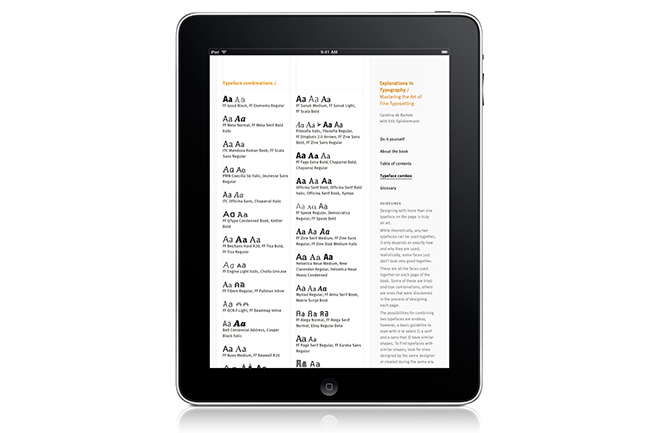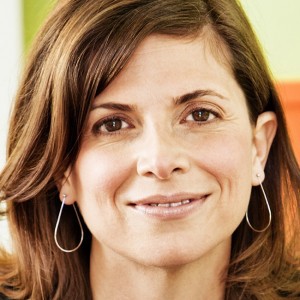I'm Carolina de Bartolo. I'm a visual communications designer. I also teach typography, design history and design thinking.
How did you get started in design? What is a turning point in your professional career?
Well, it’s not too surprising of a start. It started with my undergraduate education in visual communication design at the School of Design at Carnegie Mellon University in Pittsburgh, Pennsylvania. It’s a very process-oriented program with lots of focus on systems. Thinking, planning, building things to last. It was a fabulous education, a fabulous place to start.
One of my most excellent professors at CMU, Dan Boyarski, had the foresight to assign us an interaction design project as a senior degree project. That was 1989! So I was lucky to have gained an understanding of UI/UX design way back when the UI/UX field really didn’t even have a name. At one of my first jobs after college, I was on the design team for the Citibank banking machine.
Also, one day just browsing the stacks in the university library I came upon John Cage’s book, Silence. Seeing the variety of typesetting in that book was a turning point in my thinking about type. Years later, it sparked an idea about how I could devise a series of typographic exercises (I called them “explorations") for my typography classes. Of course, I later made those exercises into a textbook, Explorations in Typography: Mastering the Art of Fine Typesetting.


What is your ideal work environment? Do you prefer to work in your design studio all day long or mix a few activities?
I work in a studio in my home. I tend to work in bursts, focusing on a project very intensely and then not at all. And these “bursts" are both over the long arc of time as well as within a day. For example, I've gone through years of being very focused and then I downshift to doing the bare minimum (read jack sht) till I recharge.
On a good day I might get in a couple bursts. Ideas sometimes come to me in my sleep and I want to pop out of bed and go work on them. So I can get in a few hours in the morning. Then I take a long break. Usually ride my bike. Sometimes in between daydreaming about the sounds of birds, the colors of leaves and what to make for lunch, I work out design concepts in my head while riding. Then hopefully I can pedal back quickly enough to get them on paper! So I put in another few hours later in the afternoon or evening. My ideal daily work schedule is basically a split shift.
Where does your work inspiration come from? Do you believe in 'inspiration' at all?
Oh, I totally believe in inspiration. In the grand scheme of things, I usually say I'm inspired by history, nature and language. (Maybe the three are inseparable.) But I can also be inspired by anything I see, from other people's designs to a certain color next to another color on a bookshelf in the library. It's all inspiration! One of my college professors said that creative people simply have "a taller antenna." So I think it’s a matter of taking in more than the average. I like watching, noticing, seeing how much I can remember about anything I see, even memorizing the random patterns of letters and numbers on license plates. It’s fun. I have given myself the lifelong assignment to "become a better observer.” And I give it to my students as well…but I don’t check this particular piece of homework.
Where are your favorite places?
Like most creative people, I enjoy going to places I’ve never been, experiencing new environments, foods, cultures, people. I like the city and the country—quiet spots and busy places—equally well. Nearby my home there are a lot of green scenic places, great for getting outdoors and being in the sunshine, enjoying the views at the beach or from the mountains. But I love being in an urban environment just as well. Grand Central Terminal in NYC is one of my all-time favorite places.
Who are the designers you admire most?
So many to admire. I’ll say Leonardo, Andy Warhol and Wolfgang Weingart as a start.
